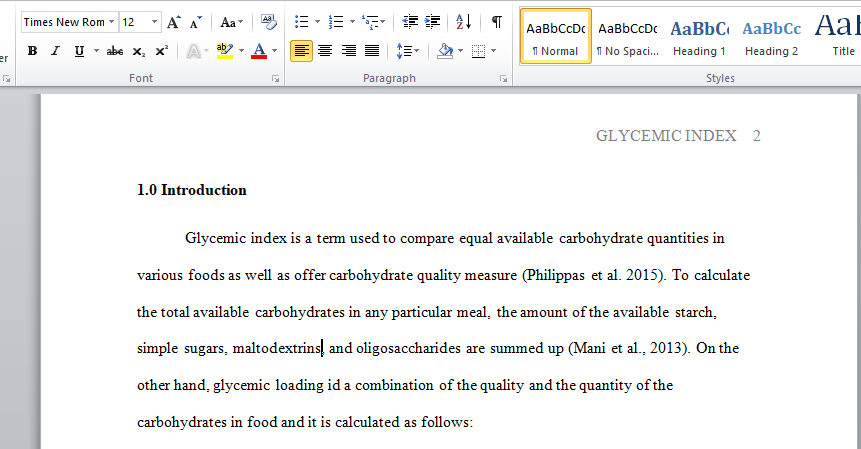Define and discuss GI and glycaemic load (GL).
Questions
1) Define GI and glycaemic load (GL).
2) What aspect of the food content or physical form alters GI?
3) Relate the GI of natural (hunter-gatherer) foods to modern processed foods.
4) How is GI of foods tested, also what foods tend to have high, medium and low GI (show
examples in a table).
5) What aspects of the food and its processing (includes cooking) effect GI, why? how?
6) What are the health ramifications of eating high GI foods?
7) Are there specific disease conditions that are caused or exacerbated by high GI foods?
1.0 Introduction (Question 1 paragraph)
Add thesis statement: “this essay will discuss about the types of carbohydrates based on GI, factors determining GI and its effects on blood glucose levels and lastly the associated health ramifications.”
2.0 Classification of Carbohydrates and GI (Question 4 paragraph) Start section with introductory sentence: “Carbs can be sorted into different categories based on their GI. “
3.0 Factors affecting GI (Question 3 + 5)
3.1 Dietary fibre (Q3) Try to find more elaboration based on fibre affecting GI (optional).
3.2 Food processing (Q5)
4.0 GI and Health
4.1 GI and Metabolic Disorders (Question 2,6,7 para) Explain the metabolic disorders (obesity, diabetes, hypertension etc).
4.2 Low-GI diets and well-being
Explain the benefits of eating low GI foods. Studies that show the effects of low GI. Main point: how lowering GI in diets improve health.
5.0 Conclusion
– Provide a summary of points made above. “in conclusion, carb-containing food can be categorised into low/mid/high based on GI, which is >insert< definition of GI >insert<. GI can
Answer preview:

Words:1300
